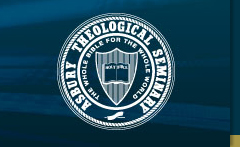This work is accessible only to Asbury Theological Seminary faculty, staff, and students. Off-Campus users should request the resource through our Library Loan system or contact the Help Desk for assistance.
Files
Download Full Text (9.3 MB)
Summary
Hindu nationalism is an ideology that seeks to create a Hindu rashtra (nation) by redefining Indianness on the basis of reIigion and culture. It is a hegemonic attempt to essentialize India as Hindu and to homogenize it under the ideology of "one nation, one religion, and one culture." The 1990s witnessed a series of well-coordinated attacks against the Christian community in many parts of India, particularly in Gujarat, by the proponents of Hindu nationalism. This study explores the phenomenon of Hindu nationalism and its impact upon the Christian community in Gujarat during the period from 1997 to 2007. Contemporary Hindu nationalism has to be understood in its historical context. This study presents a brief historical survey of the rise of Hindu nationalism, focusing primarily on the historical factors and Oriental research that laid a firm foundation for the blossoming of this movement. Also, Hindu nationalism has been portrayed as one of the streams within Hinduism (militant Hinduism) in this study, in order to avoid stereotyping all of Hinduism. The works of core ideologues - Dayananda Saraswati, Vinayak Damodar Savarkar and Madhav Sadashiv Golwalkar - as well as some of the contemporary ideologues and practitioners of Hindu nationalism are analyzed and some of their teachings are highlighted in order to grasp the ideological foundation of Hindu nationalism and arrive at a comprehensive picture of the current scenario. Hindu nationalism has made a significant impact upon the Christian community in Gujarat. Important discoveries regarding the various types of persecution, reasons for it, and the rhetorical strategies of justification as enunciated by the Hindu nationalists, as well as the resources of the Christian community that enabled them to cope with persecution are explored in this study. Conversion is probably the central and the most controversial issue in the conflict between the Hindu nationalists and Christians. Therefore, this study traces some of the historic controversies over this issue and also presents various reasons as to why the tribal community in Gujarat choose to follow Christ. The Hindu nationalists' stereotyping of the Christian community is also a critical issue and this study engages some of their criticisms, and attempts to deconstruct some of their caricaturing of the Christians in India. This study arrives at a conclusion that since the phenomenal rise of Hindutva in the 1990s, the context in which Christians live and serve has radically changed in many parts of India, particularly in places like Gujarat where the Hindu nationalists have a firm foundation. Therefore, this study offers some of the missiological challenges and the implications - for both the local and global church - of serving in this matrix of marginalization created by the Hindu nationalists.
Series
Thesis (Ph. D.);
Publication Date
January 2008
Publisher
Asbury Theological Seminary
Keywords
Shadow:, twentieth, Under, Saffron, Serving, government, politics, Nationalism, Hindu, BIB:, 2008, conflict, PrabhuSingh, other, History, Christians, Violence, Social, century, religions, Politics, Religious, 523761, -, aspects, Relations, 20th, Persecution, Christianity, India, Hinduism, Vedhamanickam, Gujarat
Language
English


Comments
xiii, 377 leaves : map ; 29 cm. Includes bibliographical references (leaves 357-377). Old URL: http://ecommons.asburyseminary.edu/xmlui/handle/10910/2347